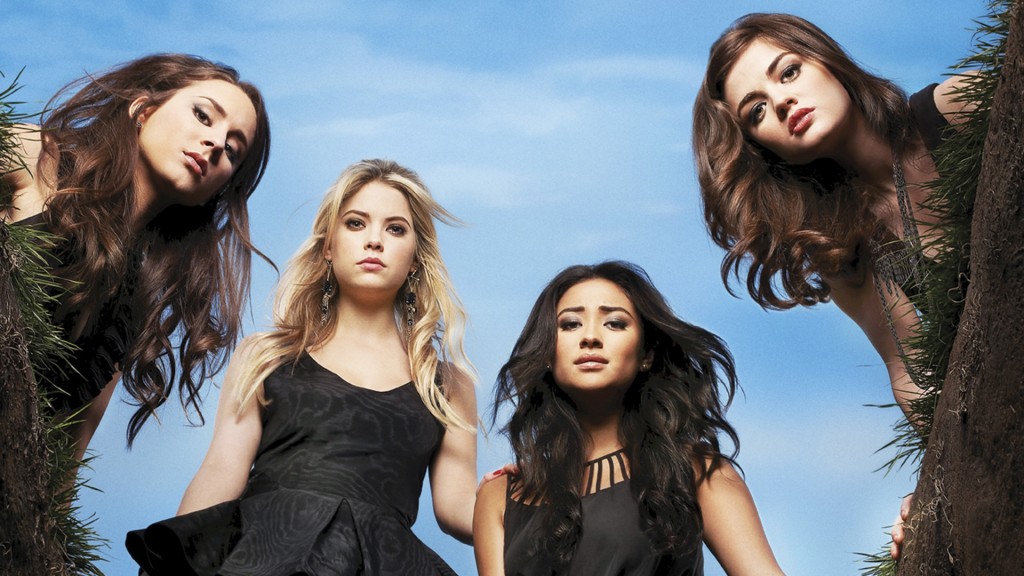‘Pretty Little Liars’ a teen drama mystery/thriller hybrid which centres many of it’s plotlines over the past five seasons over the question ‘who is ‘A’? ‘A’ in this case refers to an anonymous stalker who harasses and haunts the lives of four teenage girls. Feasey defines teen drama shows as those which “present texts that are deliberately and decisively about the lives, loves, trials and tribulations of the youthful protagonist.” (pp. 46, 2008) Additionally, Murphy describes that “thrillers often create suspense by the crudest method – simply by withholding information from the reader.” (pp. 13, 1999) Pretty Little Liars lies at the intersection of each of these.
Since the show’s conception in 2010, audiences have speculated alongside PLL’s four main characters about the identity of ‘A’, so much so that speculative fan engagement via the ‘second screen’ has become the watermark of the Pretty Little Liar’s fan experience.
Giglietto and Selva define ‘social TV’ as “the interactions among other viewers and between viewers, the characters, and the producers of the show enabled by the ‘second screen’ practise”. (2014). The ‘second screen’ referring here to the simultaneous experience of watching television while being active on computer and mobile devices, or anything involving a WiFi connection.
Pretty Little Liars brings a new meaning to the term ‘social TV’ as engagement through the second screen also encourages a kind of communal viewing experience. The collective search for ‘A’ builds hype and expectation, adding to the genre of mystery. Where the four main characters gasp at a the end of an episode when a new cliff hanger is made apparent, so too do the show’s viewers – and then they live tweet their shock and disbelief to the show’s actors, writers or their respective PLL fan communities. There is something about the chase of the answers and the ambiguity of the unknown baited by the the show’s social media campaigns which sparks endless interest.
Link: Fans were encouraged to ‘unlock’ a reaction video from one of the show’s actresses.
Pretty Little Liars is one of the most popular shows amongst the demographic of women aged 18 – 34, a group who’s constant level of connectivity to mobile devices may spark criticism or concern. Although it could be assumed that second screen use is distracting from watching the show, it seems as though multi tasking abilities allow viewers to participate with two screens simultaneously. The show builds a wider culture of viewer involvement in which fans begin to feel as though they, too are in on the hunt for ‘A’. Pretty Little Liars is very much so an example of spectatorship, which may not have been previously associated with T.V viewing.
To illustrate Pretty Little Liar’s impact on second screen use – Twitter noted that following the show’s summer finale in August 2013, the episode broke records for a scripted TV series, with 1, 973, 418 tweets. PLL fans are some of the most digitally devoted, and although they divide their attention between the screens, their attention is still directed toward the show as a whole. Social media tends to keep traditional television viewing going rather than inhibiting it, albeit through a cultural transformation of our viewing habits.
——————————————————————————————
References:
‘Pretty Little Liars’ finale: 1.45 million Tweets, 63.45 million impressions, according to NTTR’, 2014. Available from: <https://blog.twitter.com/2014/pretty-little-liars-finale-145-million-tweets-6345-million-impressions-according-to-nttr>. [Accessed: 11 August 2015]
Giglietto, F & Selva, D 2014, ‘Second Screen and Participation: A Content Analysis on a Full Season Dataset of Tweets’, Journal of Communication, Vol 64, p. 260. Available from: Wiley Online Library Journals [Accessed: August 10 2015]
Bruce F. Murphy . (December 1999). The Encyclopedia of Murder and Mystery . [Online] Available at: http://www.palgraveconnect.com.ezproxy.lib.rmit.edu.au/pc/doifinder/10.1057/9780230107359. [Accessed: 14 August 2015].
Feasey, Rebecca 2008, Masculinity and Popular Television, e-book, accessed 14 August 2015, <http://RMIT.eblib.com.au/patron/FullRecord.aspx?p=380402>.

